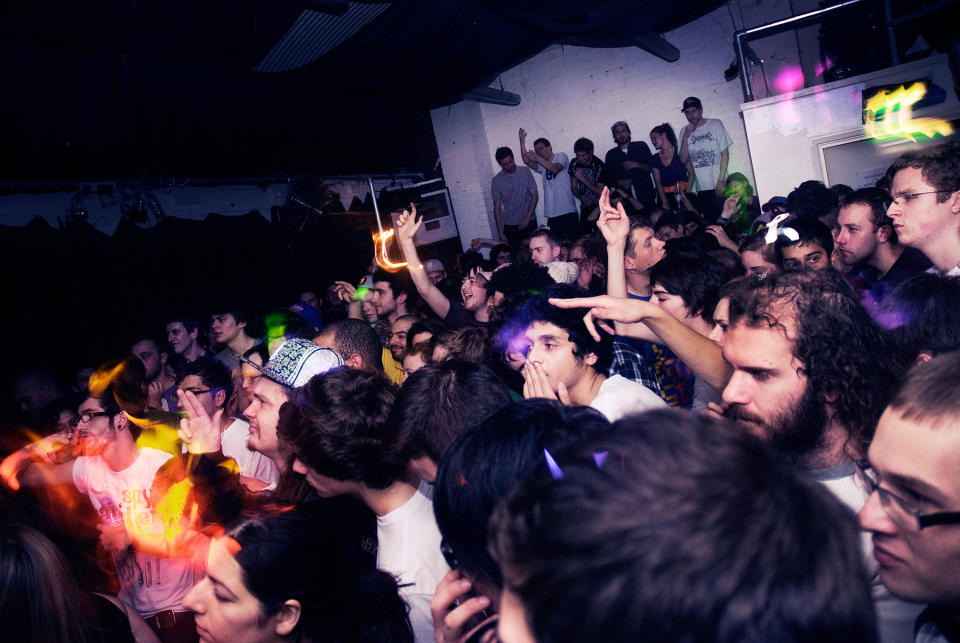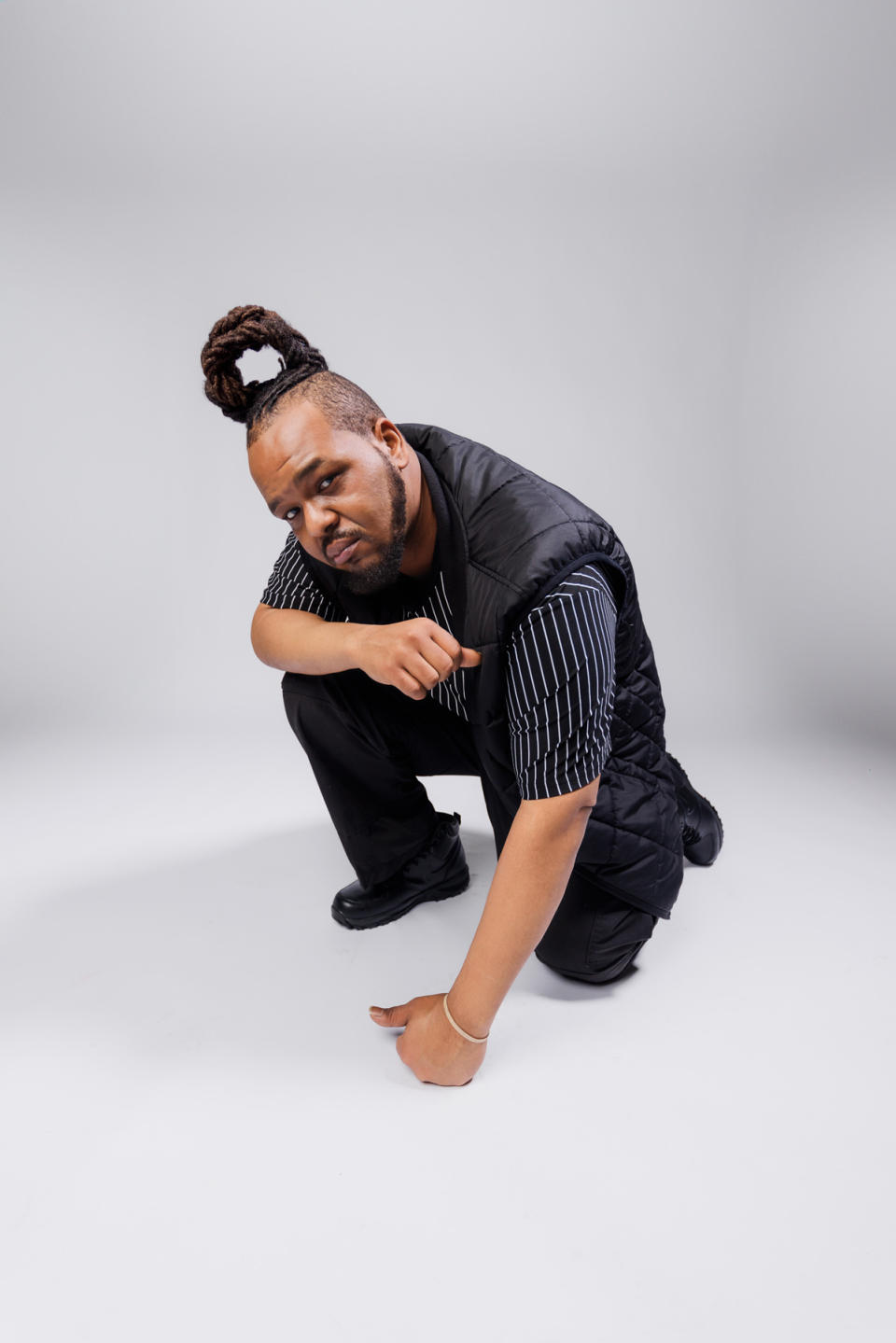How a Blog Turned Record Label Changed the Face of Electronic Music

STEVE GOODMAN, BETTER known as electronic music producer Kode9, spent the early 2000s writing about the UK’s garage scene on his webzine, Hyperdub. Goodman, who holds a PhD in philosophy from the University of Warwick, launched the now-defunct Hyperdub publication in 1999 to document the happenings of the scene that blended dark garage, a more experimental subgenre of UK garage which moved away from its pop R&B influence, and grime, its gritty emcee-centric successor that also draws from jungle, dancehall, and hip-hop.
Sometimes the zine included his personal experiences and other times, it featured interviews with pioneering names like Wiley, the Godfather of Grime. Around 2000 to 2001, Goodman also ran a radio show called “Hyperdub Transmissions” on a UK online radio program called Groovetech Radio and helped manage a website called dubplate.net for Ammunition, the team behind key early dubstep labels such as Tempa. (A dubplate stems from reggae’s sound system culture, and it refers to an unofficial, unreleased recording of a song). The site boasted audio snippets of brooding garage instrumentals that would go on to help create the sound that we now know as dubstep. In 2004, his webzine would transform into the iconic record label that served as an incubator for Burial‘s Untrue and DJ Rashad’s LP Double Cup—albums that changed the landscape of electronic music forever.
More from Rolling Stone
He recalls the boom of mp3s changing the landscape of music consumption, causing fans and executives alike to wonder how digital download culture might impact the music industry. Goodman was curious about what this would mean on a local scale. Zooming into the South London scene and dedicating his efforts toward sharing the music from it as well as writing his observations of the scene, his work with Hyperdub and dubplate.net became a historical record of early dubstep and its origins.
Kode9’s ear is like a one-way time machine, always listening toward electronic music’s future. Hyperdub’s catalog, now hundreds of releases deep in its 20-year span, only cements that. “I wanted to create a space where long-form, unedited interviews and think pieces could exist that went beyond the packaging of the dance music hype press at the time,” Goodman tells Rolling Stone. “I certainly had no sense that that particular sound was going to grow beyond the tight group of DJs and producers who were involved at that point. We were just doing our own thing. But then there was an issue XLR8R Magazine in 2002 which used the word ‘dubstep’ on the cover and which featured a bunch of the artists we had been writing about on Hyperdub like EL-B, Horsepower, and so on.”

Despite dubstep gaining mainstream recognition in the 2010s by way of names like Skrillex, it has at least a decade’s worth of history that precedes that. Dubstep officially originated in South London in the early 2000s, but its roots can be traced back to ’80s Jamaican sound system culture. The genre is an offshoot of UK garage, it also infuses elements of jungle, dub, grime and breakbeats due to the influence of artists like Steve Gurley, Zed Bias, J Da Dlex, and EL-B.
Goodman’s pointed ear contributed to the scene’s growth and Hyperdub’s success, but he had no long-term plans of being a writer or editor. He also felt as though he covered everyone he wanted to write about. It was advice from English producer and musician The Bug that got Goodman to reignite Hyperdub as a label. In 2003, the two met and Kode9 sent him a few of his early productions with The Spaceape. The Bug told him to stop sending his tracks out to labels and just start his own—he even introduced him to a distributor.
Kode9 re-launched Hyperdub as a label the following year. “Sine of the Dub,” his collaboration with the Spaceape was its first-ever release. Hyperdub transitioned from documenting music history through Goodman’s writing to becoming a major contributor through his own music as well as Hyperdub’s growing catalog. Its third release, Burial’s debut South London Boroughs EP, quickly helped strengthen its position as one of the most influential labels of the early dubstep scene. Burial also went on to become one of the most prominent and pioneering names not only in dubstep but in electronic music as a whole. Label manager Marcus Scott shares that there’s no secret to getting signed on the label. Sometimes he and Kode9 have ideas of who they want to work with already, other times they listen to a demo that makes them come back for seconds. “Everyone is different,” he says. “Everyone wants something a bit different too and we try to honour and guide their vision as best we can.”
“Everyone we have worked with is so different from everyone else [on the label],” Goodman echoes. “Maybe that is something I look for. No artist works too close to the style of others already on the label, but [they] also evolve and stretch my own taste. I used to say it’s like licking a battery, it might give you a little electric shock, or a strange metallic taste. But I don’t know what I would say these days. it depends on the weather.”
But the Hyperdub founder doesn’t feel the need to outdo what he’s already built. He adds: “The main pressure I feel, outside of the financial pressure all small labels face in 2024 in an industry in deep transition, is to do justice to the artists, in an era where it’s relatively easy to release your own music.”
Although releasing your own music couldn’t be easier than right now, electronic music is still largely a boys’ club—less than five percent of producers are women—but Hyperdub has its diverse roster of artists to thank for its eclectic collection of crates. In 2014, Goodman told Pitchfork it wasn’t intentional. “There is still a huge underrepresentation,” he said, when asked about its [champion] of women. “If anything there’s not enough women in Hyperdub.”
One of the label’s newer signees, New York City’s DJ Haram, still agrees with that statement. “But ‘enough women’ is relative,” she says. “I don’t think a roster of 100% she/hers would be enough. What matters is that Kode stated allegiance to a relatively impossible goal of addressing systemic misogyny and is taking on the task of solidarity.”
For DJ Haram, being on the label was an exciting opportunity because there were “excellent musical peers on the roster, similarities in aesthetic and attitude that make working together easier.”

On March 15th, Chicago footwork producer Heavee commemorated the label’s anniversary with its first release of the year, their new album, Unleash. As a mentee of the late DJ Rashad, the producer understands the gravity of the label’s legacy. “Hyperdub has a history of doing amazing things in electronic music, and I’m grateful to be a part of that journey,” they said. “This label and all of the artists who’ve come before me share an immense legacy. I’m inspired to bring my style and ideas to the mix. I feel grateful to have a debut release that aligns with their 20th anniversary and I’m incredibly excited for the future.”
Legacy doesn’t mean anything to Goodman yet. In fact, he’s still seeing where Hyperdub can go. “Apart from helping provide a platform for some like-minded freaks, it’s not for me to proclaim what we’ve accomplished or our legacy. I’ll leave that to others.”
Best of Rolling Stone

